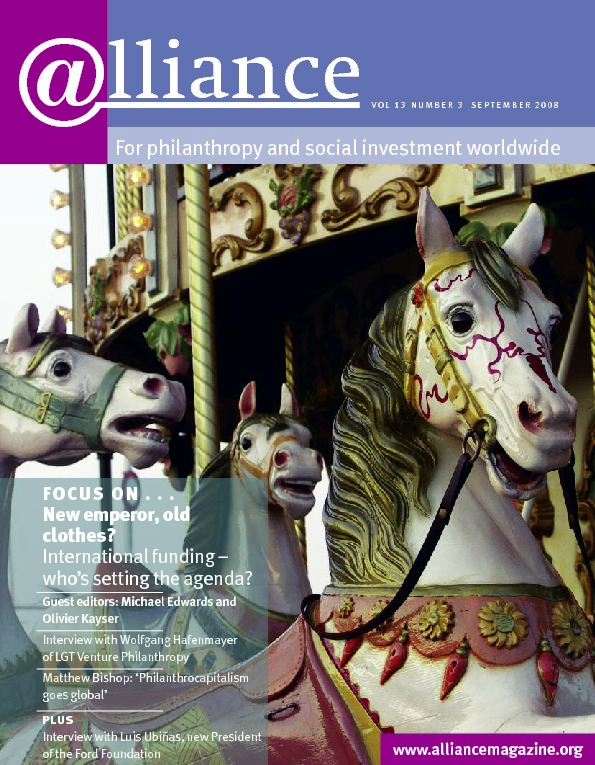Among the many excellent articles in the June Alliance special feature, I was particularly struck by Rory Tolentino’s statement that ‘responsible philanthropy tries to gather information, listens to voices close to the ground, and determines how to respond on the basis of the information gathered and the viewpoints heard’. I don’t know of any company that would have been successful without having done extensive market research, analysing needs and conditions on the ground and potential competitors before launching a new product.
Foundations usually conduct similar research before investing in new programmes, but it may be that they have sometimes focused too much on identifying a niche among the orchestra of funders rather than identifying the real needs of those they are trying to help.
Because of the power imbalance in donor-recipient relations described by Melissa Berman, learning from (potential) grantees is not an easy thing to accomplish, but it is the only way forward if we want to create long-term and sustainable change.
One potential shortcut for those funders who cannot spend a lot of time ‘on the ground’ might be learning from those of their peers who have engaged with grantees on a long-term basis and can provide ‘trusted input’ on what their needs are. The growing number of giving circles and donor networks like the Global Philanthropists Circle and others provide an excellent vehicle for this. And maybe giving circles should be renamed ‘learning circles’ to signal the value of learning from and listening to potential beneficiaries (and your peers) before engaging in giving.
But the best way of creating change may actually be a real joint venture where foundations and recipients design projects together from scratch, from carrying out the needs analysis (where the foundation would be predominantly the learner and the grantee predominantly the ‘teacher’) to jointly analysing points of intervention, resources needed, and ways in which the foundation can support the recipient in implementing the programme. To take pressure off the one-on-one relationship, one could even think of having a group of foundations sitting down with a group of recipients to look at the larger context of an issue before co-designing a series of connected projects.
Agreed, this model needs a lot of trust between foundations and recipients and real honesty about each other’s strengths and weaknesses – but no true joint venture functions without such a dialogue eye to eye.
Felicitas von Peter
Managing Partner, Active Philanthropy


Comments (0)